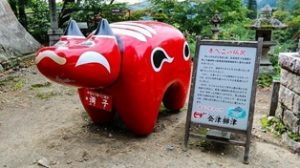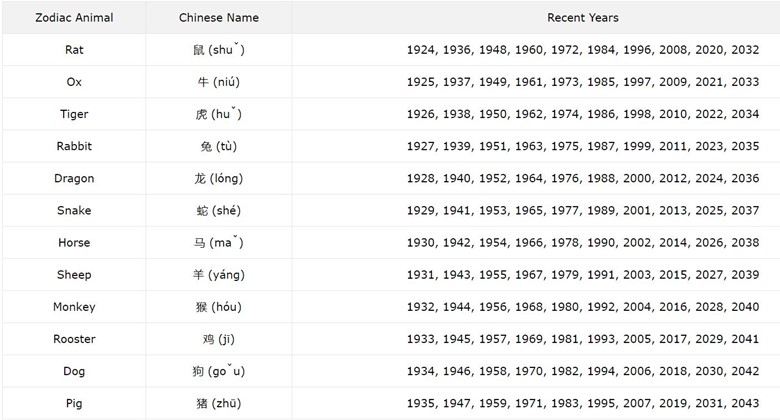Akabeko (Ox or Cow toy)
Painted and lacquered papier-mâché
3 ¾” H x 5 ְ⅝” W x 1 ⅞” D
Fukushima, Japan
2828
Seton Hall University Museum of Anthropology and Archaeology Collection
HAPPY NEW YEAR
2021 – YEAR OF THE OX
The Lunar New Year is primarily celebrated in Asian countries such as China, Vietnam, South Korea, Singapore, Tibet and Mongolia. The festival has different names depending upon the country. It is called Tết in Vietnam and Losar in Tibet. The Lunar New Year represents new beginnings regardless of the region or country, though each region’s traditions vary. The holiday occurs on the first new moon of the lunisolar calendar, which lasts roughly 354 days and is traditional to many east Asian countries, in contrast to the 365 day Gregorian calendar used in the United States. Traditionally, the festival was a ceremonial day to pray to gods and ancestors for a good planting and harvest season. The three main themes of the holiday are fortune, happiness, and health.
Each new year is associated with an animal sign from the zodiac. The Lunar New Year marks the transition from one animal to the next and each has its own attributes. In order, the zodiac animals are: Rat, Ox, Tiger, Rabbit, Dragon, Snake, Horse, Goat, Monkey, Rooster, Dog and Pig.[1] This year, 2021, is the Year of the Ox. If you were born in an Ox year, you are diligent, dependable, strong and determined. Oxen have traditional, conservative characteristics.[2] If you would like to know what your zodiac animal is, you can look it up on this chart[3]:
Unlike other Asian countries, Japan no longer celebrates Lunar New Year. In 1873, during the Meiji Restoration – the political revolution – Japan adopted the Gregorian calendar to put the country in step with the West. Initially, this break with the traditional lunisolar calendar was strongly opposed. Many Japanese continued to celebrate the Lunar New Year well into the 20th century, especially in rural areas. Eventually, the lunisolar calendar faded completely from daily life in Japan.[4] Today, the New Year in Japan is celebrated on December 31 and is known as Ōmisoka.[5]

Though Japan no longer celebrates the Lunar New Year as a whole, there are vestiges of the traditional celebration that hold fast. “Little New Year,” or Koshōgatsu, is celebrated on January 15. For the New Year’s breakfast, it is still customary to eat azukigayu (rice porridge) with sweet, red azuki beans. In the past, after eating this meal, a divination ritual would then be performed by placing bamboo cylinders in the remaining porridge and leaving them overnight. The more rice that was stuck inside the cylinders the following morning, the better the harvest would be that year. Today, some temples and shrines still perform the traditional divination rituals.[6] Another custom that is held over from traditional Lunar New Year celebrations is to make and eat rice cakes (mochi).[7]
The object of the week is an ox is from the Seton Hall Museum of Anthropology and Archaeology. This toy is known as Akabeko (赤べこ), a legendary cow[8] from Japan, said to have helped build the famous Enzoji Buddhist Temple. It is one of the three main temples dedicated to Kokuzo Bosatsu, a bodhisattva whose wisdom was said to be as expansive as the universe. The toy is made out of two pieces of wood covered with

papier-mâché, shaped and painted to look like a red cow or ox. One piece comprises the cow’s head and neck and the other, its body. The head and neck hang from a string which runs through the hollow body so that when the toy is moved, the head bobs up and down and side to side. The earliest akabeko toys were created in the late 16th or early 17th century.[9] Today, the toy has become a symbol of the Fukushima Prefecture where the Enzoji Temple is located[10].
The Walsh Gallery has a considerable collection of fine art, artifacts and archeological specimens for use by faculty, students and researchers. For access to this or other objects in our collections, contact us at 973-275-2033 or walshgallery@shu.edu to make a research appointment.
[1] https://chinesenewyear.net/zodiac/, accessed 1/28/2021.
[2] https://www.chinahighlights.com/travelguide/chinese-zodiac/ox.htm, accessed 1/28/2021.
[3] https://www.travelchinaguide.com/intro/social_customs/zodiac/, accessed 1/28/2021.
[4] https://www.cheng-tsui.com/blog/why-doesn%E2%80%99t-japan-celebrate-the-lunar-new-year, accessed 2/3/2021.
[5] https://www.cheng-tsui.com/blog/why-doesn%E2%80%99t-japan-celebrate-the-lunar-new-year, accessed 2/3/2021.
[6] https://www.cheng-tsui.com/blog/why-doesn%E2%80%99t-japan-celebrate-the-lunar-new-year, accessed 2/3/2021.
[7] https://en.wikipedia.org/wiki/Japanese_New_Year, accessed 2/3/2021.
[8] https://en.wikipedia.org/wiki/Akabeko, accessed 2/1/2021.
[9] https://www.japan-guide.com/e/e7712.html, accessed 2/1/2021.
[10] https://en.wikipedia.org/wiki/Akabeko, accessed 2/1/2021.

